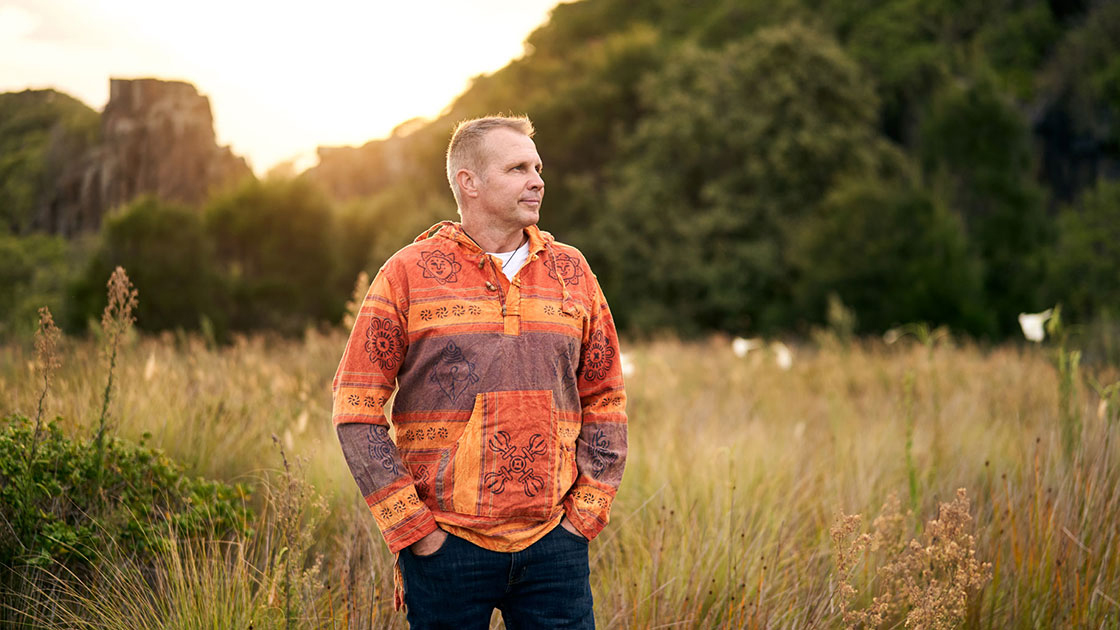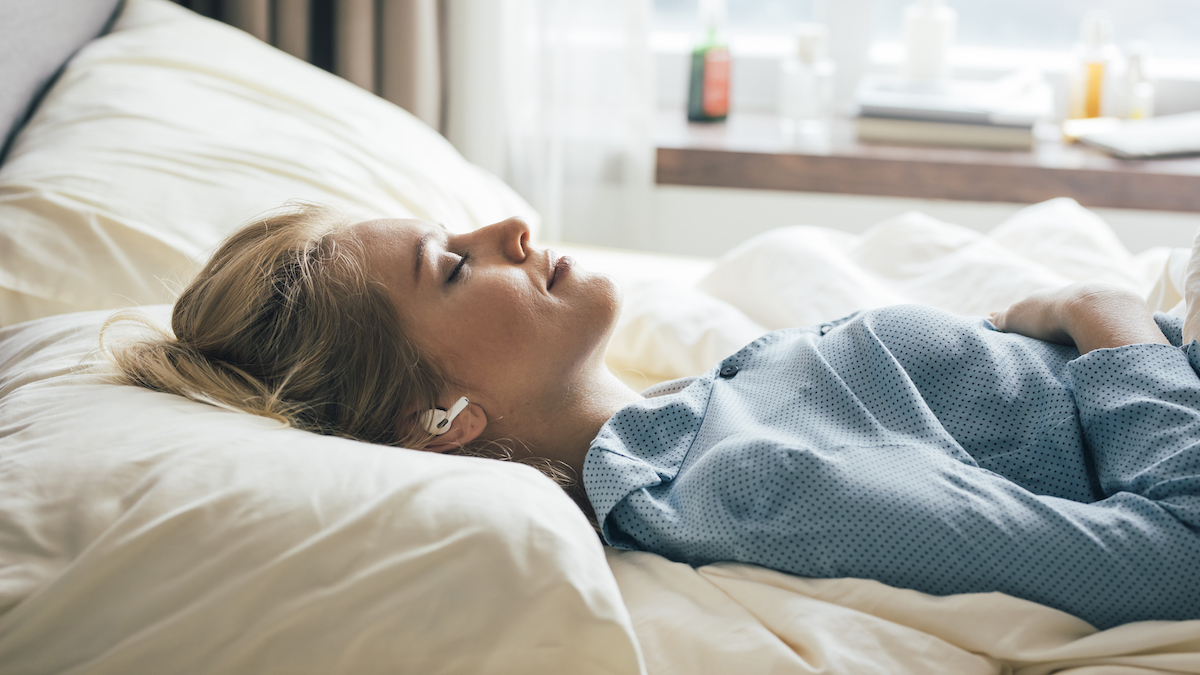I tried one of YouTube’s best deep sleep meditations – here’s what happened
There are hundreds of deep sleep guided meditations on YouTube, but I tested one of the most popular to see if it really works

As an ex-insomniac, I used to struggle with not just falling asleep but staying asleep, so when I was introduced to sleep guided meditations I was rolling a huge sleep debt and ready to try anything.

Jason Stephenson’s Floating Among The Stars has over 14 million page views and has racked up a serious amount of praise from YouTubers. It’s routinely included in lots of ‘best deep sleep guided meditation’ lists and has been on my to-try list for a while.
They didn’t work straight away for me, and I remember feeling more comfortable with simple meditation music at first rather than the lengthier guided sleep meditations. But over time they started to work their magic. The main change I noticed? I wasn’t scared of sleep any longer – I started to view that period before falling fast asleep as something to relax into and not stress over.
Even as a sleep editor, I’m not immune to the odd bout of insomnia. Stress, anxiety, periods – they can each trigger a restless night. So I still use deep sleep guided meditations and sleep breathing techniques, such as the Military Sleep Method or body scan sleep technique, as part of my bedtime routine.
This past week I’ve been testing one of YouTube’s most popular sleep meditations, Floating Among The Stars by meditation teacher Jason Stephenson. Here’s my experience of using it…
- Read more: How to get more deep sleep — 7 expert tips
What happened when I tried this popular deep sleep meditation
The first night I fired it up, I finished my bedtime routine as normal and settled in bed. I pressed play on the video and started with some gentle deep breathing while listening to the relaxing music played at the beginning. And then Jason’s voice made its debut.
This meditation teacher has a very soothing voice, which is vital when you’re relaxing for sleep. Jason begins the meditation by asking listeners to close their eyes and feel their mind pause. This isn’t easy if you’re stressed, have a busy brain or you’re trying to sleep when feeling anxious, but this guided sleep meditation runs for just over an hour so you have time to get into it.
Night 1
My day was really busy, so the chance to ditch my worries and focus instead on visualizing the night sky was a novelty. Anyone who says “you are about to take a journey into the depths of relaxation” has my vote, and I could soon feel my body relaxing; shoulders dropping, face softening. The big focus in the beginning is on letting go of your thoughts and to simply be in this sleep meditation, feeling safe, warm and quiet.
Sign up to get the BEST of Tom's Guide direct to your inbox.
Get instant access to breaking news, the hottest reviews, great deals and helpful tips.
However I have to admit to a little eye-rolling when Jason said “you are the child of stars”. While this type of language isn’t for everyone, I’m kinda used to it after 11 years’ of yoga classes and endless guided sleep meditations. I got about 35-ish minutes into the hour-long video before my eyes started to feel super-heavy. I vaguely remember taking my Airpods out of my ears before falling asleep, feeling relaxed and quiet of mind.
Night 2
Last night’s relaxing vibe stayed with me through the morning, but by the afternoon my growing to-do list was ramping up my stress levels. By the time bedtime rolled around I was looking forward to taking another dive into this sleep meditation and focusing my mind on stars, not work.
Even though I felt wired earlier in the evening, the combination of my usual bedtime routine and this guided sleep meditation soon took effect. I didn’t make it through more than 20 minutes before yanking out my Airpods and falling asleep. I did wake up in the middle of the night, but instead of using my trusty 4 7 8 sleep method, I jumped back into this video. Within about 10 minutes I was asleep again – and had a vivid dream about shooting stars. I wonder why.

Night 3
My third night of testing fell on the evening before a big deadline, so my mind was nudging around what I needed to do the next day. I felt restless and doubted whether this meditation would have the same impact as the previous two nights. Time to find out…
Work thoughts kept trying to muscle in during the first few minutes of meditation music, but by the time Jason started talking, I could feel that heavy sense of relaxation fall over my body. I didn’t last much longer than 15 minutes, and the last words I heard were “it carries away all of your worries.” If I woke up during the night, it must have been fleeting because I didn’t remember.
What are deep sleep guided meditations?
Guided meditations have been around for a long time and have much in common with yoga nidra, that blissful state between being awake and being asleep. Sleep guided meditations help you fall asleep easier by encouraging you to relax your body and mind, and to let go of any stresses and worries you may be carrying around.
You can find relaxing sleep meditations on YouTube, Spotify and a whole host of free and paid-for sleep apps. Some of the most famous include Calm, which is also home to a great library of bedtime stories for adults, and Headspace, one of the original mindfulness apps.

Deep sleep guided meditations come in a range of lengths, from short 20-minute audio or video meditations, up to the hour or longer meditations like the one I tested on YouTube. Listen to a few to see what you prefer, and use your quality of sleep and how refreshed you feel in the morning as an indicator of how well each guided sleep meditation works for you.
How do guided meditations help you sleep?
As mentioned above, relaxation and letting go are the name of the game here. Most deep sleep meditations use a combination of relaxing music, sound waves and guided body scans to help you reach that place of sheer bliss before sleep. They can be very powerful, depending on how often you practice them (I use them every night), so only listen to one when you’re in bed and ready to fall asleep.
Other deep sleep guided meditations to try
Jason Stephenson’s Floating Among The Stars isn’t the only deep sleep guided meditation in town, so here are three others I recommend to help you fall fast asleep:
1. Headspace
Although Headspace is best known for its app, you can find lots of the company’s guided sleep meditations on YouTube. The most popular is its Relaxing Wind Down Body Scan for deep sleep. It has racked up a staggering 193 million views and counting, though it’s only a minute-ish long so you may need something a bit meatier.
2. The Honest Guys
This likeable duo have produced a series of guided sleep meditations, including the Guided Sleep Talkdown, which has over one million views and uses Delta-Wave tones and binaural beats to relax you for sleep.
3. Get Sleepy
Prefer podcasts? This one offers guided sleep meditations and bedtime stories for adults, and you usually get a couple of episodes a week so there’s plenty to pick from. You can find Get Sleepy on Spotify and iTunes.
How to get comfy for a sleep meditation
A big part of sleep hygiene is having a clean, quiet, cool and dark bedroom to drift off in, and experts recommend getting your room ready for sleep as part of your bedtime routine. A sleep-friendly temperature is 65℉/ 18.3℃, while dimming the lights ahead of sleep sends a signal to your brain that it’s time to wind down.
Turn down your bed, so it’s ready to climb into, and prep yourself for a comfortable night’s sleep. That could be personal hygiene, followed by some relaxing breathing techniques or even reading a book.
Make sure you have the best mattress for your sleep needs too, as the support of your bed can make a difference to how well you sleep. If you have joint pain consider a good memory foam mattress, while hot sleepers should invest in one of the best cooling mattresses. If you don’t have the budget for a new bed but need more softness or firmness to sleep comfortably, a good mattress topper will come to your rescue.

Claire is a qualified journalist and Certified Sleep Science Coach with over 16 years’ product review experience, and who is connected to a wealth of globally renowned sleep experts including mattress designers and buyers, neuroscientists, and doctors of sleep medicine. Claire is responsible for all mattress and sleep content published on Tom’s Guide and is our expert on Saatva, DreamCloud, and Nectar mattresses. Claire is also certified to advise people on how to choose a mattress that suits their needs and budget, as well as helping them to create a nighttime routine and bedroom environment that helps them sleep better. As our Senior Sleep and Mattress Editor, Claire oversees our rigorous testing procedures for our mattress reviews, while leading our team of specialist reviewers and writers who report on all the latest sleep products.
-
gria You might like this:Reply
https://youtube.com/@bedtimestoriesandsleepmusic?feature=shared has the coziest stories with soothing ambient noise. I would recommend starting with: b0rmQc-zHQ8View: https://youtu.be/b0rmQc-zHQ8.
